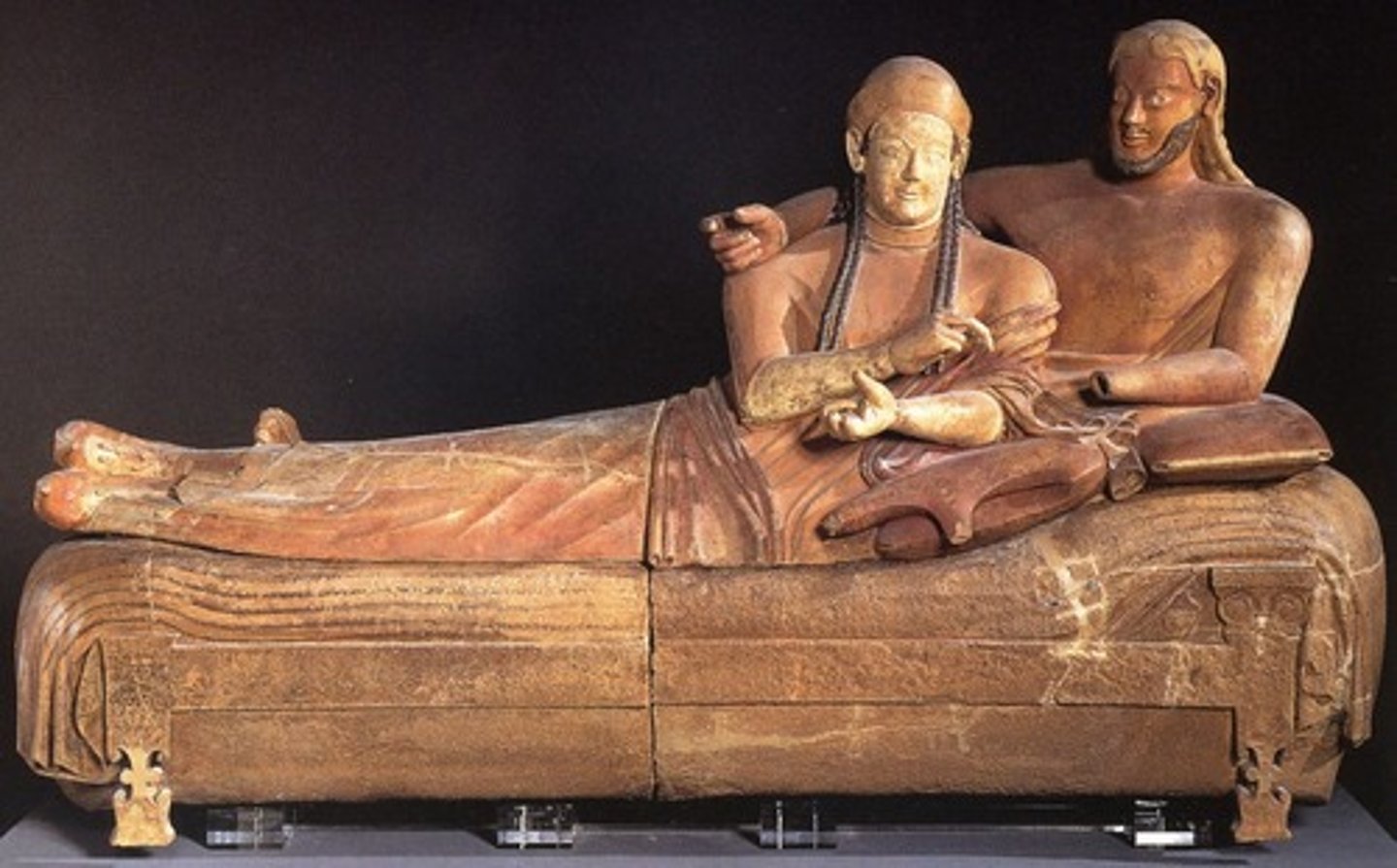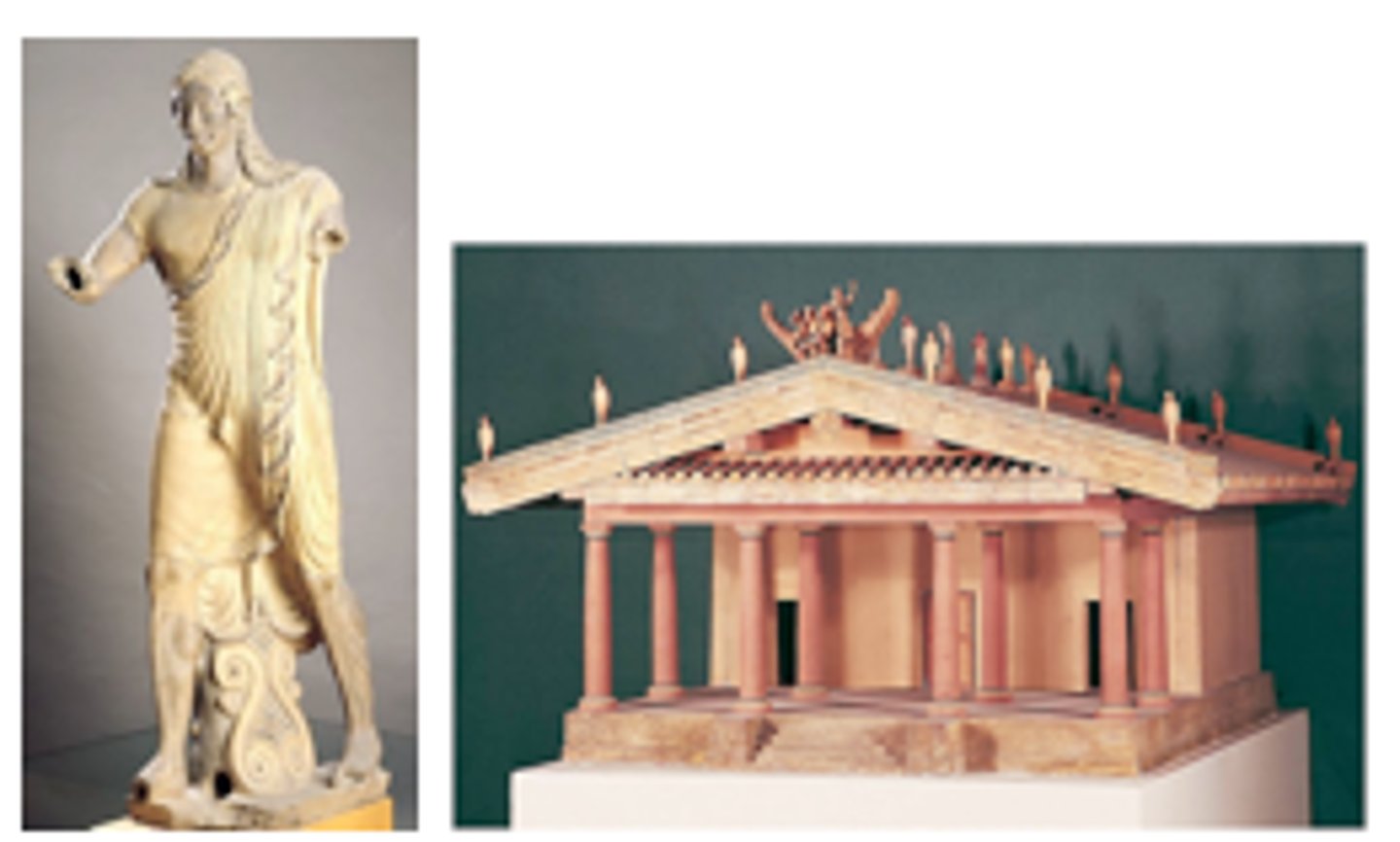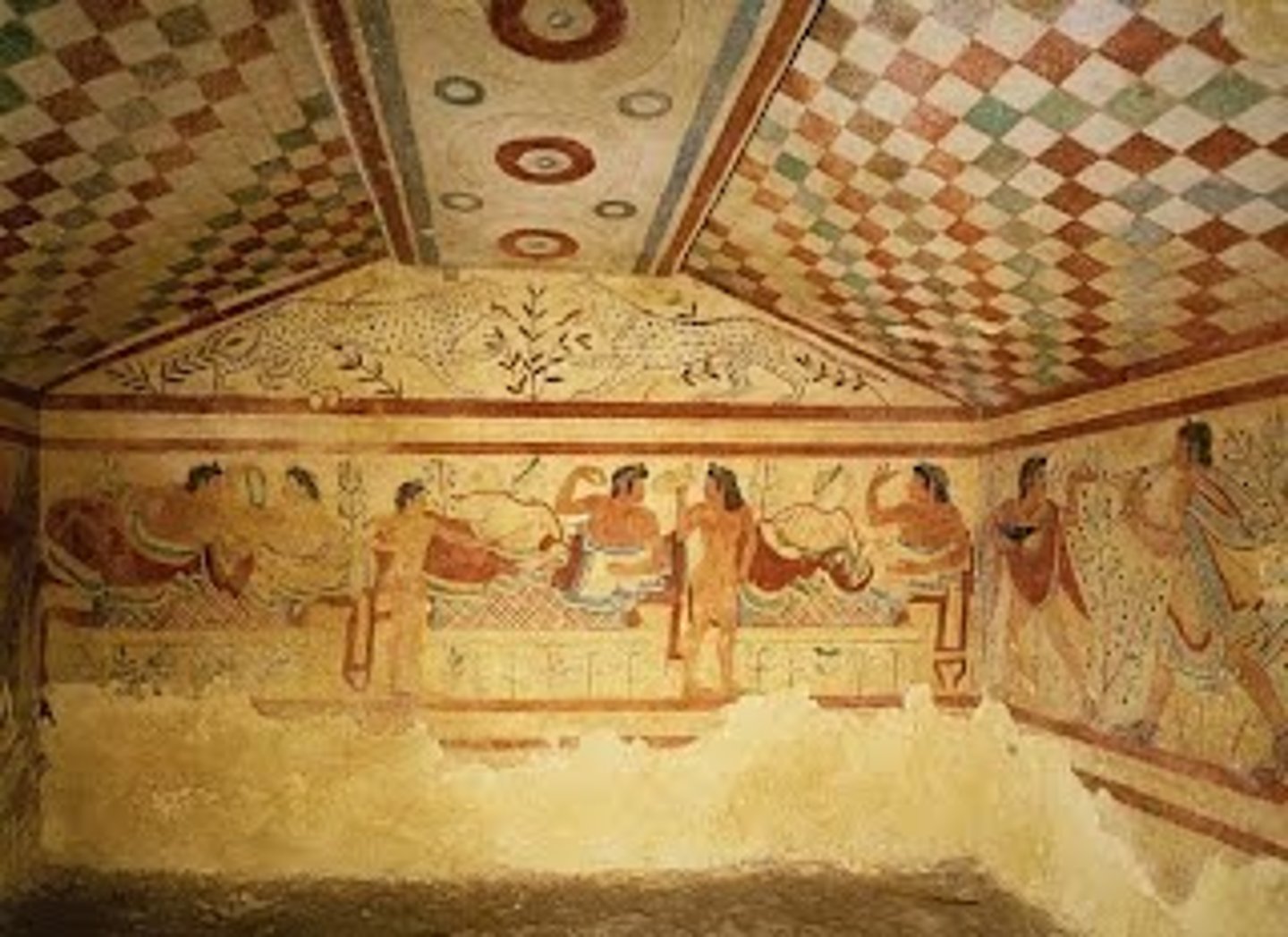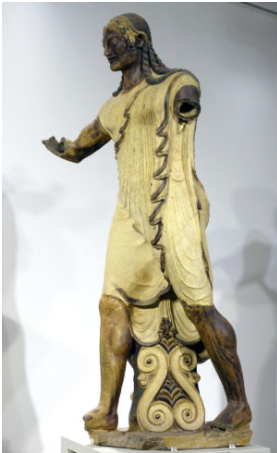8 Unit 2: Ancient Etruria (Etruscan Civilization)--ID & Visual Analysis
1/3
There's no tags or description
Looks like no tags are added yet.
Name | Mastery | Learn | Test | Matching | Spaced |
|---|
No study sessions yet.
4 Terms

title & siting: Sarcophagus of the Spouses ( Banditaccia necropolis, Cerveteri, Italy) artist & culture: Etruria style: Etrsucan date of creation: ca. 520 bce materials & technique: painted, fired terracotta form & content: Two full-length portraits of reclining and embracing male and female figures on a couch, stylized depiction (L-shape, detailed upper body, diminished lower body) of figures likely sharing a meal with harmony of male figure’s arm encircling female figure who feeds him.

title & siting: Temple of Minerva (Portonaccio Temple) at Veii artist & culture: style: date of creation: 510-500 bce materials & technique: mud brick, cut tufa black, wood form & content: Narrative tableau sculptural program on roof, temple on raised stone (tufa) fountation, deep porch and staircase leading to tripartite doorway and corresponding interior spaces (triple cella), Tuscan capital

title & siting: Tomb of the Triclinium (Monterozzi necropolis, Tarquinia, Italy) artist & culture: unknown Etruscan style: Etruscan date of creation: ca. 470 bace materials & technique: fresco form & content: depicts a lively banquet scene with reclining figures, illustrating themes of feasting and celebration in Etruscan funerary customs.

title & siting: Aplu, or Apollo Veii, sculpture of Apollo (central peak of the roof of Temple of Minerva at Veii) artist & culture: Master Sculptor Vulca, Etruria style: Etruscan date of creation: 510-500 bce materials & technique: painted terracotta form & content: